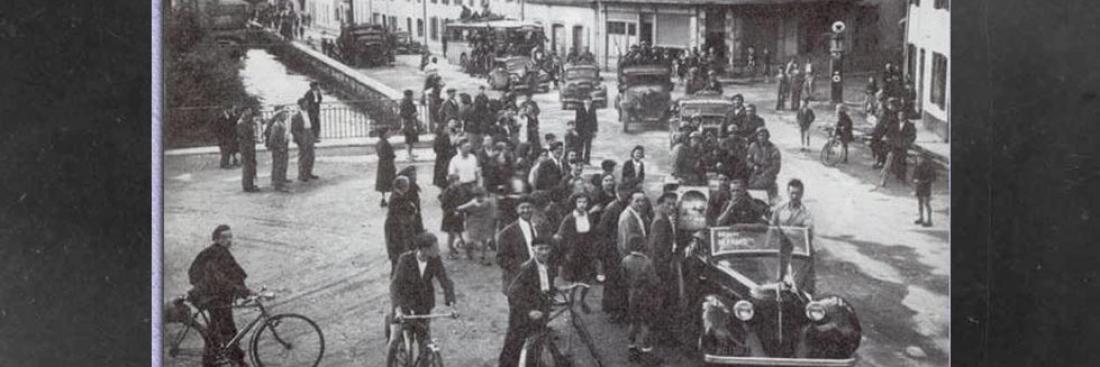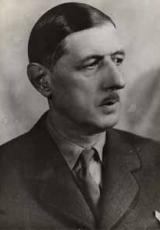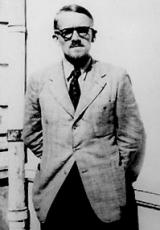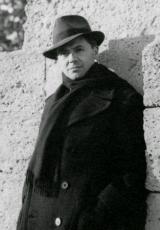The Resistance in Bigorre (65)

On 22 June 1940, an armistice put an end to the fighting...
The French army had resisted the Blitzkrieg, in vain: the Army of the North was surrounded around Dunkirk and the Maginot Line was bypassed. On 14 June, the German army entered Paris; on the 22nd they took La Rochelle and Lyon.
The Reynaud government resigned, delegating its powers to Maréchal Philippe Pétain. He moved the seat of power to Vichy, in the Free Zone, whereas the Wehrmacht occupied the northern part of the country and the Atlantic coast. There was a flood of refugees: Tarbes had to take in 90,000 people, 21,000 of them from the Ile-de-France region alone, in July 1940.
Meanwhile, General Charles de Gaulle carried on the fight from London, calling on the French people to continue the struggle: the Resistance was born.
Its earliest manifestations nationwide were the spontaneous creation of intelligence networks and smuggling lines.
Little by little, the resistance movements took shape. The topography provided refuge and strategic gathering areas, working in favour of the growth of the Maquis:
-
in the armistice army, such as Lieutenant Ceroni;
-
amongst trade unions, which were made illegal, the local sections of ”Libération” were formed (Fourcade, Le Goff, Nolibos);
-
in the administration and public services (Prefects Gonzalve and Le Gentil);
-
amongst the veterans of World War I, in reaction to the government's collaboration programme (handshake between Pétain and Hitler at Montoire, October 1940) and their manipulation, such as Pierre Cohou;
-
amongst the railway workers who wrote the story of the ”battle of the rails” in combat at the Tarbes depot, at the train stations in Lannemezan, Lourdes, etc.;
-
in the press, with journalists such as Pierre Dumas and Pierre Bertrand speaking out in La Petite Gironde.
The networks, whether national, local or the direct product of the army headquarters of the English (Intelligence Service) or the French (2e Bureau and the B.C.R.A.), performed intelligence activities (military and political), organised the smuggling of people across the border, prepared and received parachute drops and carried out sabotage actions. The ”Edouard” network was set up by the British in July 1940. Restaurant owner Gaston Hèches was at the head of this network. A Special Operation Executive (S.O.E.) group, the ”Action” network, headed by Charles Rechenmann, reported directly to Major Buckmaster's network. Other organisations linked to the S.O.E. were set up: the ”Hilaire”, ”Wheelwright”, ”Polonais”, ”Alliès” networks in Lourdes, the ”Meccano” network in Tarbes and Lourdes, the Kasanga-Bigorre” network, linked to the ”Combat” movement in Tarbes, created by Jean Cénac (Pailhé) in May 1942; ”Alliance” was set up at the initiative of Captain Doué in Lourdes in November 1942; ”Andalousie”, a product of the B.C.R.A., in the Lourdes/Argelès sector, headed by Colonel Bistos, etc.
The Resistance movements were a reflection of the national character of counter-propaganda. ”Combat”, set up in the occupied zone by Henry Frenay in 1941, was given a department-level structure by Pierre Dumas. With Pierre Teitgen, he organised the publication and distribution of underground newspapers. The movement had many local personalities in its ranks, including Sahuc, Mercier, Cénac, Charier, Sajous, Moreau, Lafon-Puyo and Gachies.
The group helped underground fighters and carried out a certain number of guerrilla actions, notably planting a bomb at the Bureau de la Main d'Oeuvre pour l'Allemagne (German Labour Office) in Bagnères-de-Bigorre in August 1942. The Franc-Tireurs-Partisans-Français (F.T.P.F.) movement, outlawed in September 1939 and tracked down by the Pétain government, brought together many Communists and trade union activists as well at former members of the Spanish Republican Army, the ”Guerrilleros”. It was organised into small, independent cells. In November 1942, the F.T.P.F. set up in the southern zone, as the German army had crossed the demarcation line. Its cells joined the Mouvements Unis de la Résistance (Unified Movements of the Resistance) in 1943. Jean Toujas, Bordedebat, Serra, Briard and Chastellain coordinated the struggle for the F.T.P.F. in the Hautes-Pyrénées department. They distributed the underground newspaper ”L'Humanité” and took care of resistance fighters wanted by the police and people who refused the Compulsory Work Service (S.T.O. - Service du Travail Obligatoire). The Nistos-Esparros and Soulagnets Maquis were then formed, along with the Marquis, Torres and Dhugues groups. The F.T.P.F. occupied the sector of Bagnères as of 10 June 1944 and took part in the liberation of Lourdes (19 August 1944).
The Metropolitan Organisation of the Army (O.M.A. - Organisation Métropolitaine de l'Armée), after 1944 called the Resistance Organisation of the Army (O.R.A. - Organisation de la Résistance de l'Armée), was made up of staff, officers and non-commissioned officers of the Armistice Army, as well as the southwest grouping of the Corps Franc Pommiès (officer in the 18th infantry regiment), an indication of the military's commitment to the fight against the Reich and its allies.
It was well established at all levels of the administration, with its members gathering information on factory production, troop and supply transportation and the provision of supplies. They coordinated parachute drops and led sabotage actions: a commando made up of the F.T.P.F., members of the A.S. and C.F.P. (Corps Franc Pommiès) put an end to the activities of the Hispano factory on 15 April 1944.
The Unified Movements of the Resistance (M.U.R. - Mouvements Unis de la Résistance), formed by Jean Moulin in January 1943 to bring together and unify the national organisations ”Libération”, ”Franc-Tireur” and ”Combat” under a single commandment, was set up starting in July 1943. The regional leadership was entrusted to Verdier (Forain); Marcel Le Goff and Pierre Cohou took on this function on the department level. The Hautes-Pyrénées department was liberated on 20 August 1944. The 150 guerrilla actions carried out between July 1942 and August 1944 cost 205 resistance fighters their lives, with 527 others imprisoned and deported for acts of resistance, political opinions or for being Jewish. German retaliations against civilians led to 78 deaths and 50 injuries in the last three months.




